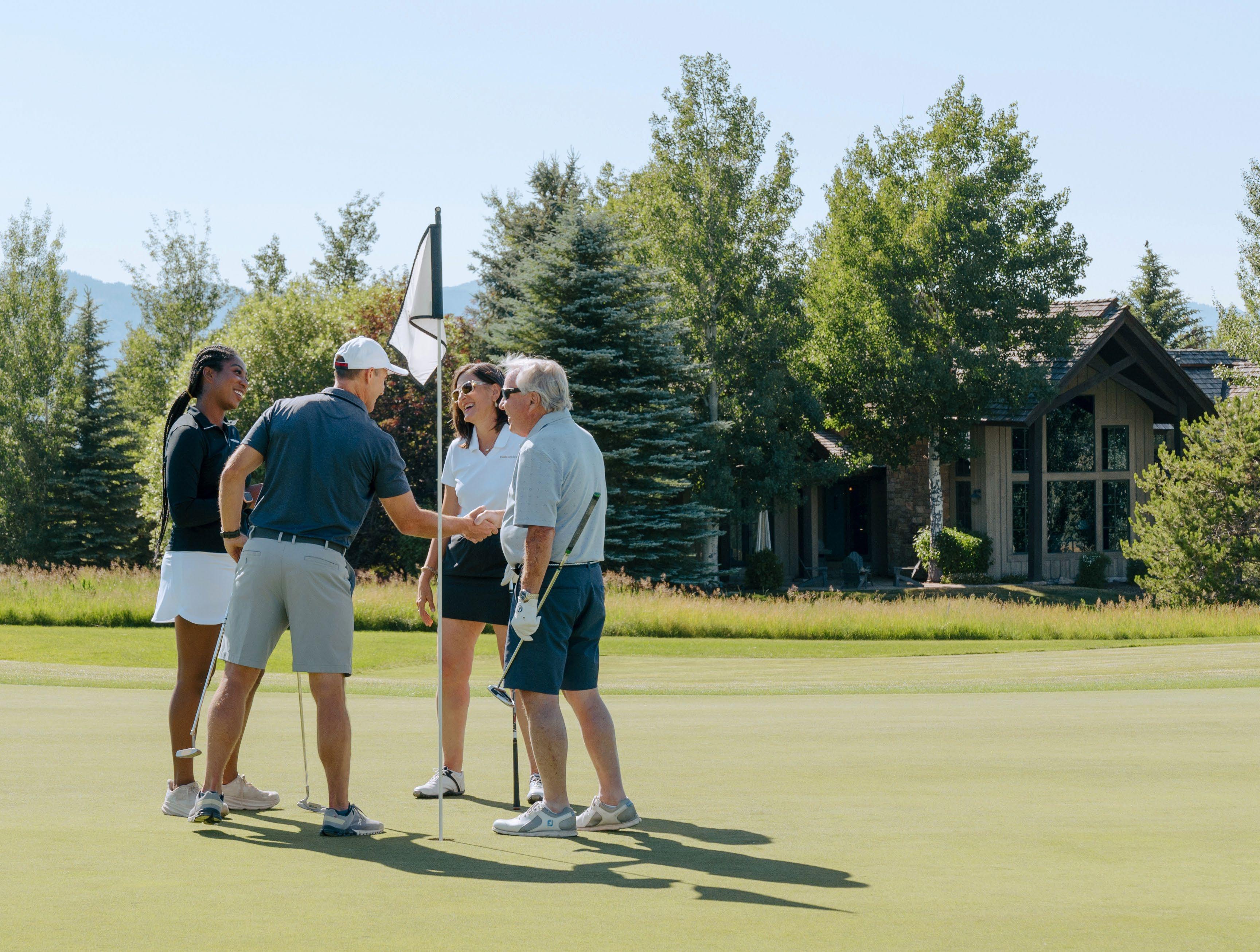
Your Dream Golf Home






Your Dream Golf Home




Following your passion for golf into a community built around this favorite pastime is a dream for many, with an increasing population making it a reality everyday. However, golf community living isn’t one size fits all and there are unique nuances of living near the greens that are crucial to understanding before making an investment. Engel & Völkers, together with a PGA of America Golf Professional, help you make the most informed decision as you pursue your love of golf on and off the green.

Evaluate the orientation and layout of potential homes. Properties that back onto golf courses are scenic, but can often lack privacy. Look for homes with strategic landscaping or those that offer privacy-enhancing features.
Consider plots further away from cart paths and tee boxes to minimize noise and activity near your home. We suggest asking if the maintenance vehicles are gas or electric; 5:00 a.m. comes early!

Each golf community has its own vibe. Some are bustling with social events and children’s activities, while others are more serene, appealing to those seeking a more quiet lifestyle.
Familiarize yourself with community and residential rules as well as etiquette regarding golf course access to see if these match your expectations.
Ask the membership director what clubs and activities exist within the club and/or community. If you like wine tasting, travel, working on cars, etc., they will be able to shed light on current groups or lack thereof. Socialization is a major factor in club living.

Delve into what the HOA fees cover. Some fees might be higher due to neighborhood maintenance, but also may provide greater value in the amenities offered.
Check for any restrictions on home modifications, especially those that might affect your view or privacy.
Your HOA fees and annual dues to the club will likely be two separate expenses. Be sure to understand how much annual dues are for your membership and budget accordingly. One important note that is often overlooked—ask the club if they anticipate any capital improvement plans to the club that might require a member assessment.

Homes on golf courses often hold their value well, especially in well-maintained communities. However, consider the cost of potential window replacements or added landscaping for privacy and protection.
Homes adjacent to the course often have stricter landscaping rules to preserve the aesthetic view for players. Ensure you are comfortable with these before buying.
There has been extensive research of late that suggests capital improvements to a club’s course and amenities positively affect the market value of club community homes. Don’t be surprised if a special assessment occurs or new club members have to take part in a contribution. This is a good thing! You want your club to be healthy with new amenities.

Many golf communities provide enhanced security measures like gated entries and regular patrols, offering both a sense of exclusivity and safety.
Safety and security are what many consumers are looking for in their new golf community. When pulling up to the security gate, take notice of how strict the guards are with letting outsiders in.

If you’re thinking about renting out your home, check the community’s rental policies. Some communities have restrictions that could affect your plans.
Keep an eye on local market trends to see how other golf community properties are performing.
Get to know the term “bundled community.” In the Sun Belt markets, this is a common term for clubs where each home in the community has a golf membership attached. This is great if you plan to rent out your home as you can transfer the membership to the club for a minimal fee. Bundled communities are also great because every resident shares in the health of the club. This helps leverage the costs with a potential assessment.

Homes closer to fairways or greens may experience more stray golf balls. Consider lots further from direct play areas or well-protected by natural barriers or netting.
If in the southern states with screened-in lanais, check for holes. Walk out back and take a look at the distance from the tee. You’ll get a good feel for the level of risk.
• Equity vs. Non-Equity: Is the club an equity membership, or are there non-equity options?
Golf Pro Tip: Important to know as you can then decide which is best for you. In most cases, an equity membership will come with refundability while with non-equity memberships you will lose your deposit, but have an exit strategy. With equity you get a say in the club’s decisions, however, not as much with the non-equity option.
• Number of Homes for Sale: How many homes are currently on the market in this golf community?
Golf Pro Tip: The typical club community has an annual turnover rate of 8-10%. If there are more than 15% of homes for sale in the community, that should raise questions as to why.
• Waitlist: Does the club have a waitlist?
Golf Pro Tip: Waitlists are a common hurdle these days for buyers. In many clubs, it could be 3-5 years before your number is called. Understand how the waitlist operates, including deposits, usage of the club, playing ability, etc.
• Frequency of Play: How often do most residents play golf here? Are there any restrictions on tee times, and how crowded does the course typically get?
Golf Pro Tip: Is there a virtual tee time system or good oldfashioned pencil and paper? If virtual, it's important to know how the system is weighted.
• Family Involvement: Is this a family-friendly golf community? Does it offer any beginner programs or activities for spouses and children who are interested in learning golf?
Golf Pro Tip: Spend some time with the golf professional during your tour of the club. They should have a calendar of programs. Most juniors will play for free.
• Additional Amenities: What other amenities are available besides golf? Are there facilities like tennis courts, swimming pools, or fitness centers?
• Social Opportunities: What kind of social activities does the community offer? Are there clubs or social groups that can be joined to meet neighbors and make friends?
• Costs: What are the costs associated with living in this community, including homeowners' association fees, golf membership dues, and any other mandatory expenses?
• Lifestyle Considerations: What's the overall atmosphere of the community? Is it more laid-back or active? How do residents usually interact, and are there quiet areas or family zones?
• Club Assessment: When was the last time the club had an assessment?
Golf Pro Tip: This is a very important question to ask. You need to understand the club’s long-term strategic plan so no surprises occur.

• Show me the Tee Times: I’ll be here mostly in x month, can you show me the tee sheet from last x month?’
• Maintenance and Noise:
– Given that golf courses require early morning maintenance, how does the community minimize disturbances for residents living close to the course?
– Are there home locations that are less affected by maintenance noise and lights, such as those on a less-frequented fairway or with bedrooms facing away from the course?
– What measures, like blackout curtains, are effective in reducing light disturbances from golf cart headlights?
• Proximity to Cart Paths: Homes near golf cart paths might experience more activity and noise. What measures are in place to minimize this, and are such homes priced differently? This can affect your choice depending on your noise sensitivity.
• Landscaping and Outdoor Areas: For homes close to high-traffic areas, how effective are landscaping and architectural features in buffering noise? Consider the placement of pools or decks to minimize disturbances from golf carts.
• Views and Privacy Concerns: Evaluate the impact of golfer activity near greens and tee boxes by observing these areas at different times. This can help you decide if the level of activity and privacy suits your needs before making a home selection.
Choosing a home in a golf community means considering how aspects of golf and community life impact your daily living. These insider tips will guide you to select a home that offers the perfect blend of lifestyle preferences, privacy, and investment potential.

Upon your initial visit with club officials, there are four important questions you should ask during the visit so you can get quick facts about the current status of membership:
• What is your membership capacity at the club?
• How many members does the club have currently?
• How many members are currently on the club’s resignation list?
• What is the club’s resignation policy, and how does it function?
Important questions to get on the table before you proceed to spend valuable time.
The health of a club is one of the most important factors in an investment of this magnitude. Inquire about the club history of assessments and if there are any foreseeable capital improvements in place which may require a member assessment going forward.
When visiting the club, explore the golf shop and meet the PGA professional and additional activity directors associated with the club. Once you join a club, your golf staff will play a significant role in your overall satisfaction with the facility. Ask about teaching programs and weekly games that may exist with a group close to your handicap. Also, be sure to inquire about the current tee time policy and procedures during the season, along with the average rounds per day. Between those facts and an understanding of weekly league play, you will be able to envision day-to-day life at the club.
When searching for a club there is oftentimes a real estate component involved in the decision. If your home is the primary deciding factor into the seasonal transition be sure to consider the distance of the club and your new home. During season an 8 mile drive can take upward of 30+ minutes. If you have daily practicing ambitions this could be a deal breaker.
Without question, 2008-2012 played a significant role in the golf industry. Many consumers with investments in the stock market had to discontinue their club membership as it was simply not justifiable. To survive the down economy many clubs dropped initiation programs to gain additional members at a lower rate. Even though you may be able to afford these lowered initiation programs, can you sustain 15+ years of annual dues and fees? Ask about guest fees in season, food and beverage minimums, pro-shop prices, staff gratuities, etc. As you can imagine, a resignation list is not where you will want to be five years after joining.

